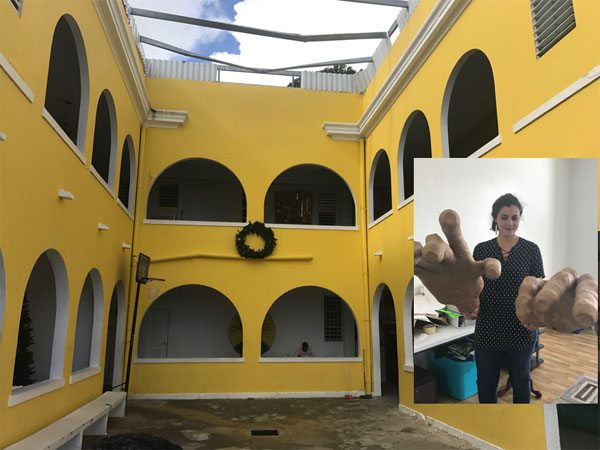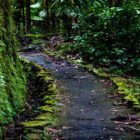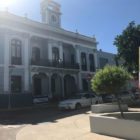
This week, NPQ will be running a series of articles on Puerto Rican nonprofits and how they’re operating and thinking in the wake of Hurricane Maria. It’s part of our effort to illuminate the processes of building anew and recreating from disaster in a region where inequity is already extreme. More generally, the stories provide a glimpse of the vision, reality, and experiences of those affected most by a devastating combination of growing global economic inequality, environmental change, and democratic failures. Because of that, we hope they will be useful far beyond the boundaries of Puerto Rico and its supporters.
We expect this series to be of interest to nonprofits, infrastructure organizations, and funders alike, so please help us distribute it. We expect to continue this conversation well into the future, so we welcome your comments and feedback. Many of you have already shared how the articles in this series to date have helped you better understand the complexities of the situation, the choices that need to be consciously made, and the prominent role nonprofits play.
The bright yellow building that houses local arts program Crearte is still intact after Hurricane Maria—even if it has some roof damage and, as of December, no electricity.
Nirvana Gonzalez Rosa, the coordinator of One Voice Movement (Movimiento Una Sola Voz), Puerto Rico’s network of nonprofit organizations, and my guide for most of my visit, explains that this way,
The old buildings are the better ones. There are antique homes here of the landowners, of 100 years, when slavery existed, the sugar and coffee plantations, that still exist. They’re all made of wood, but the construction was different. They are constructed with screws, not nails. When the massive construction began, when the developers began to build for money, not for security, then the quality of the construction came down. Those houses were the ones that were blown away by the hurricane or have damages now.
In other words, those buildings were constructed for sustainability in mind.
According to the 2010 Census, Yabucoa is a town of about 38,000. That number may be much lower by the next census. Santos says, “A lot of people have left. By the time of Maria, the people of Yabucoa were already moving out.”
Yabucoa is known for its history as a sugar-growing region, with its sugar mills and plantations, and its agricultural production of vegetables, particularly tubers, and fruits. It has also had a significant dairy industry for some time, and by the beginning of the 20th century, the cheese industry dominated economic activity in the area. By the 1970s, it had “five first-class dairies.” More recently, it has also added cattle and hog farming.
Its port and tributaries have also made Yabucoa an industrial zone, with many factories, particularly for the production of clothing, cigarettes, and electrical appliances. By the mid-1970s, there were 35 tobacco farms, including R.J. Reynolds Tobacco Company’s cigarette factory. There is also the Sun Oil petrochemical plant that refines petroleum, which was later acquired by Shell Chemicals. More recently, there is the Olein Recovery Corporation, which recycles oil.
Besides contributing to the local economy (and to international companies), these industries also damaged the health of its residents and environment. Santos says,
Yabucoa is a town with a high incidence of respiratory diseases and cancer. You will notice that Yabucoa is a valley surrounded by mountains, so the contamination remains. All of those factories have left. There’s a high incidence of unemployment and people have had to move. What is left is Cristal Products, which makes cleaning products for cars and home, and the oil refinery. We still have a port, but the only thing that comes through there now is gasoline.
Sign up for our free newsletters
Subscribe to NPQ's newsletters to have our top stories delivered directly to your inbox.
By signing up, you agree to our privacy policy and terms of use, and to receive messages from NPQ and our partners.
This is a theme in Puerto Rico—polluting companies that destroy the land and create towns overwhelmed by respiratory diseases and cancer. Over and over, I heard about people who manage diseases that are the result of workforce conditions or environmental pollution. Driving along any of Puerto Rico’s highways, one is likely to pass an abandoned oil refinery. (Petrobras operated Commonwealth Oil Refining Company, known as Corco, in the town of Penuelas until 1982. The 800-acre complex refined 161,000 barrels of oil a day and left behind “an enormous ghost town of blackish chimneys and disused iron labyrinths that, even today, continue throwing their toxic breath on nearby communities.” Driving past it, I was surprised by its vastness and that the company was able to leave it like that, abandoned, polluted, and taking up so much land.)
Given this history of pollution, it is even more significant that after the hurricane, a lot of medical offices in Yabucoa have closed. Residents now travel to other towns to receive their medical care. Gonzalez Rosa says, “This [hurricane] has caused a health crisis, and we already had a terrible health crisis here. The exodus of medical professionals has exacerbated the health crisis and health access. So, again, who is most impacted? The most vulnerable people who don’t have health insurance, that depend on government aid, and to access medical care. They have to leave Yabucoa, and if you don’t have a car, depend on someone to take you? There is practically zero public transportation in Puerto Rico. So then, it’s a grave situation.”
But Crearte sits in the midst of all of that like a beacon. Its mission is to facilitate the emotional and social development of youth using non-traditional strategies. It launched in 2001 as an alternative to traditional schooling for dropouts, but its quality arts program quickly attracted high-performing students. Sara Santos, Health Facilitator and Coordinator of Community and Volunteer Projects, recently told NPQ that, although at the beginning the school had a stigma from serving dropout students, now, “Kids come here, and they are enchanted by how they are treated.”
In December 2017, I traveled to Crearte’s second site in Yabucoa, the municipality on the southeastern coast where Hurricane Maria entered the island in September. The mountain range that crosses Puerto Rico starts in Yabucoa. Crearte’s initial site opened in 2001 in a low-income area in Rio Piedras, a San Juan neighborhood. The Yabucoa site opened in 2014.
Art is omnipresent in Puerto Rico. It’s not defended or extolled as important; it just is. Art is also a significant site of social discourse—even more so for a nation struggling with colonialism. At Crearte and in my travels there, I heard it described as a potent form of self-creation. In addition to struggling with some of the US highest levels of poverty and political misrepresentation, Puerto Ricans must resist narratives that offer them subordinate identities.
Crearte’s approach is reflected in its language. Educators are not called teachers, but “facilitators,” because what they do is facilitate the learning process. And then there is the beauty of the space. Although the Yabucoa site is almost a campus, with its set of buildings tucked into the foot of the nearby mountains, the school, which appears to be the main building, is housed in what was once the municipality’s first hospital, 50 years ago. It was donated to the nonprofit, which quickly set about renovating the beautiful building into an inspiring arts space. According to Santos, many of the participants’ parents and grandparents were born in the building when it was a hospital. It has roots.
Crearte contracts artists as resident facilitators. It has had artists who work in plastics, theater, painting, murals, masks, and stilts. Every last week of April, it hosts its annual Arts Festival, which invites the community and serves as a laboratory for artists. Most of the artists are Puerto Rican, but last year Santos brought Chilean artist Erik Estrada, who makes giants. He came to Puerto Rico to work with Deborah Hunt, a maskmaker, puppeteer, and performance artist from New Zealand, who has lived in Puerto Rico since 1990 and is a long-term resident artist facilitator. They taught the students how to make giant hands out of plastic bottles and paper. Giant hands are exactly what Puerto Rico needs now, as it struggles to rebuild itself into a more resilient, self-serving form.
Since the hurricane on September 20, 2017, the school has adjusted its hours to keep serving students in spite of its lack of electricity and damaged roof (it is raising $120,000 for the repairs) and, like many other community-based nonprofits, also took on the additional responsibility of operating as an emergency provisions distribution center. Santos says, as we sit in her dark, artsy office (the walls are painted dark red, the wooden frames and doors have a washed turquoise treatment, and I can see the mountains through the one stark window behind her desk), “By 5, it’s already dark, so by 4, we start closing. Originally, we held classes Monday through Thursday, and we extended it to Fridays so that we can recoup more time.”
Like many I spoke with, Santos is hopeful about the opening created by the hurricane’s destruction. She concludes,
This is an opportunity for us to change the structure because what is the point of rebuilding something that was already failing. I think we need new ideas that are sustainable. The benefit of the hurricane is the ability to take advantage of the opportunities. Communities need to keep organizing and strengthening themselves. In this moment, it’s the only way to rebuild. That’s how nonprofits are looking at it.
Coming up, NPQ will host a Funding Puerto Rico webinar as part of our Peek Behind the Curtain philanthropy series. We seek to continue following the rebuilding effort on the island and bridging the sector there to the US sector. Thank you for engaging.











